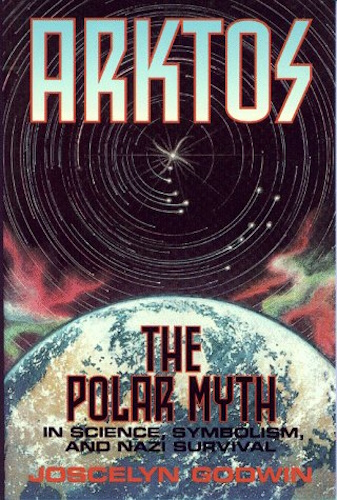
ARKTOS: The Polar Myth in Science, Symbolism and Nazi Survival
A scholarly treatment of catastrophes, ancient myths and Nazi Occult beliefs. Explored are the many tales of an ancient race said to have lived in the Arctic regions, such as Thule and Hyperborea. Progressing onward, the book looks at modern polar legends: including the survival of Hitler, German bases in Antarctica, UFOs, the hollow earth, and the hidden kingdoms of Agartha and Shambhala. Chapters include: Prologue in Hyperborea; The Golden Age; The Imperishable Sacred Land; The Northern Lights; The Arctic Homeland; The Aryan Myth; The Thule Society; The Black Order; The Hidden Lands; Agartha and the Polaires; Shambhala; The Hole at the Pole; Antarctica; Arcadia Regained; The Symbolic Pole; Polar and Solar Traditions; The Spiritual Pole; The Catastrophists; The Uniformitarians; Polar Wandering; more.
Paperback: 272 pages
Publisher: Adventures Unlimited Press; Revised ed. edition (August 1, 1996)


Transylvanian Moonrise: A Secret Initiation in the Mysterious Land of the Gods

From the Inside Flap
In August of 2003, a mysterious and unprecedented collaboration of American and Romanian military troops conducted an expedition beneath the Romanian Sphinx in the Bucegi Mountains and uncovered the greatest archaeological find of all time: a mysterious chamber some 50,000 years old with holographic technology that is beyond man's wildest dreams.
Despite the political intrigue, turmoil and restriction around this great discovery, the leader of the expedition enabled Radu Cinamar to visit and explore these artifacts. Ever since, Radu's life has been a labyrinthine adventure of strange events, clandestine liaisons and extraordinary people and circumstances.
Transylvanian Moonrise tells the story of Radu's meeting with a Tibetan lama who claims to have put the above events in motion in order to change major imbalances in the Earth. This is not only a remarkable story, but it is an initiation of the highest order that will benefit anyone reading it.
Transylvanian Moonrise: A Secret Initiation in the Mysterious Land of the Gods will take you far beyond your ordinary imagination in order to describe events that have molded the past and will influence the future in the decades ahead.
About the Author
Radu Cinamar is a member of the Romanian government's most secretive intelligence agency, Department Zero, who witnessed modern technology that was discovered beneath the Romanian Sphinx in the Bucegi Mountains.
Paperback: 281 pages
Publisher: Sky Books (NY) (April 24, 2011)
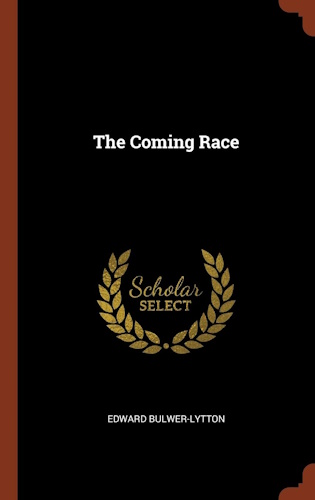

This work has been selected by scholars as being culturally important and is part of the knowledge base of civilization as we know it.
This work is in the public domain in the United States of America, and possibly other nations. Within the United States, you may freely copy and distribute this work, as no entity (individual or corporate) has a copyright on the body of the work.
Scholars believe, and we concur, that this work is important enough to be preserved, reproduced, and made generally available to the public. To ensure a quality reading experience, this work has been proofread and republished using a format that seamlessly blends the original graphical elements with text in an easy-to-read typeface.
We appreciate your support of the preservation process, and thank you for being an important part of keeping this knowledge alive and relevant.
Hardcover: 158 pages
Publisher: Pinnacle Press (May 24, 2017)


The Untold History: How the British East India Company's "Pre-Fabian" philosophical radicals set up Capitalism and its antithesis Communisim

No details available
Unknown Binding: 290 pages
Publisher: The Committee for the Restoration of the Republic (1954)
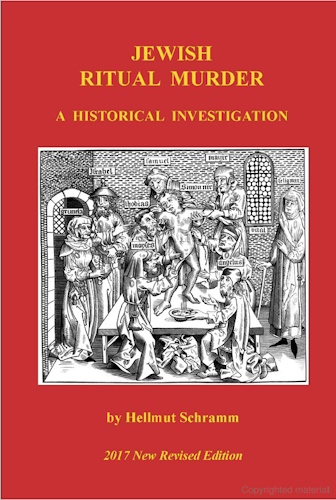
NOTE: Amazon no longer carries this title. RealityRoars.com is providing this .pdf copy for your convenience.
The position I have come to after translating this work, is that the accusation of JRM (Jewish Ritual Murder) has always been based upon a real and not an imaginary, phenomenon, a historical reality. I believe that, for all practical purposes, and for a variety of reasons, genuine cases of JRM were beginning to peter out at around the turn of the 20th century. I believe that they were perpetrated by what are usually referred to as the "ultra-Orthodox" Jews; after the mid 17th century, that means the Hasidim in particular; that up until the late 19th century, the existence of JRM was more generally known to exist by the Jews themselves, although its practice was anything but universal among them. I believe that today, very few Jews know its history and most of them do indeed honestly regard it as a "libel." What has convinced me of it as historical reality are the following:
- 1. Descriptions of the various incidents go back in the historical record to around 170 B.C., and then occur over the next approximately 2000 years wherever a Jewish community of any size has lived;
- 2. The details of the cases — what today would be called the "signature" and the modus operandi of these crimes are remarkably consistent, especially considering the lack of communication over widely separated geographical locations during much of that millennium-and-a-half.
- 3. Contrary to the way it is always portrayed, JRM is not just an hysterical collection of horror stories originating in ignorant peasant minds, but has been considered genuine by educated persons who actually had opportunity to investigate the crimes committed, and who left detailed documentation in the form of trial protocols, etc.
- 4. There have been rare but genuine defections by Jews who left Judaism voluntarily and not in an attempt to gain leniency or favors, and who wrote about this practice.
- 5. Even assuming confessions were gained by torture, in several cases the judicial authorities saw to it that witnesses and accused were questioned separately, with no opportunity to compare notes. In some of these cases, physical evidence was found which corroborated the statements of the accused in such a way as to establish their guilt beyond question. In other cases, Jews were actually caught in the act.
- 6. As with other phenomena associated with the Jews, this one has been associated with no other "minority group" world-wide — rather odd if it were just the result of some sort of myth-creating tendency, or something analogous to it.
- 7. The details of purported cases of JRM, separated by more than 500 years, show the same patterns, the same confessional features, and so forth.
- 8. There are highly suggestive passages even in Jewish sacred writings which indicate that this practice was not only condoned but prescribed. References to the use of sacrificial human blood appear in various religious Jewish works, and in the writings of well-known Jewish luminaries, as Schramm delineates; according to the tractates of the Jewish philosopher Maimonides, blood obtained by the piercing of the body is a curative beverage — the blood of animals is not what is meant. In a very rare and little-known book by Rabbi Chaim Wital, Ets-Chaim (XVII Century), we read that "the murder of goys and the drinking of their blood increases the holiness of Israel for the Jews."
.pdf file: 346 pages
Author: Hellmut Schramm
Translated by: Regina Belser
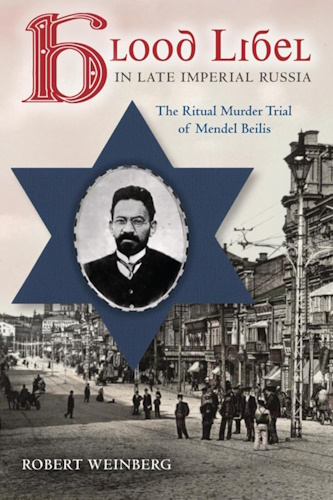

Blood Libel in Late Imperial Russia: The Ritual Murder Trial of Mendel Beilis

On Sunday, March 20, 1911, children playing in a cave near Kiev made a gruesome discovery: the blood-soaked body of a partially clad boy. After right-wing groups asserted that the killing was a ritual murder, the police, with no direct evidence, arrested Menachem Mendel Beilis, a 39-year-old Jewish manager at a factory near the site of the crime. Beilis's trial in 1913 quickly became an international cause célèbre. The jury ultimately acquitted Beilis but held that the crime had the hallmarks of a ritual murder. Robert Weinberg's account of the Beilis Affair explores the reasons why the tsarist government framed Beilis, shedding light on the excesses of antisemitism in late Imperial Russia. Primary documents culled from the trial transcript, newspaper articles, Beilis's memoirs, and archival sources, many appearing in English for the first time, bring readers face to face with this notorious trial.
Paperback: 204 pages
Publisher: Indiana University Press; 1 edition (November 20, 2013)


The ritual murder accusation is one of a series of myths that fall under the label blood libel, and describes the medieval legend that Jews require Christian blood for obscure religious purposes and are capable of committing murder to obtain it. This malicious myth continues to have an explosive afterlife in the public sphere, where Sarah Palin's 2011 gaffe is only the latest reminder of its power to excite controversy.Blood Libel is the first book-length study to analyze the recent historiography of the ritual murder accusation and to consider these debates in the context of intellectual and cultural history as well as methodology. Hannah R. Johnson articulates how ethics shapes methodological decisions in the study of the accusation and how questions about methodology, in turn, pose ethical problems of interpretation and understanding. Examining recent debates over the scholarship of historians such as Gavin Langmuir, Israel Yuval, and Ariel Toaff, Johnson argues that these discussions highlight an ongoing paradigm shift that seeks to reimagine questions of responsibility by deliberately refraining from a discourse of moral judgment and blame in favor of an emphasis on historical contingencies and hostile intergroup dynamics.
About the Author
Hannah R. Johnson is Associate Professor of English at the University of Pittsburgh.
Hardcover: 250 pages
Publisher: University of Michigan Press (July 9, 2012)
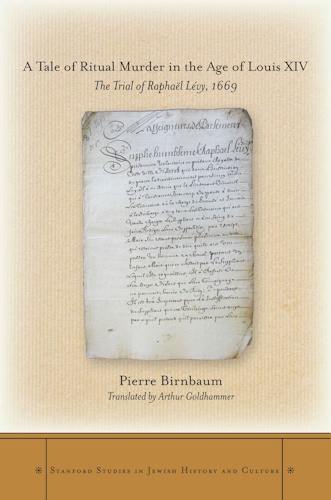

A Tale of Ritual Murder in the Age of Louis XIV

In the late seventeenth century, France prided itself for its rationality and scientific achievements. Yet it was then that Raphaël Lévy, a French Jew, was convicted, tortured, and executed for an act he did not commit, a fiction deriving from medieval anti-Jewish myth: the ritual murder of a Christian boy to obtain blood for satanic rituals. When Lévy was accused of the ritual murder, it was the first accusation of blood libel for a century. Lévy's trial, however, became a forum for anti-Jewish accusations, and although the Holy Roman Emperor and a representative of King Louis XIV both tried to intervene, they were ignored by the parliament of Metz. Pierre Birnbaum explores the cultural, political, and personal elements that led to the accusation and shows that the importance of this story goes beyond local history: at a critical moment in the construction of the nation-state, France was unable to impose its conception of law and order on local officials. Birnbaum reveals the echoes of Lévy's trial in the Dreyfus Affair and suggests that, amid the contemporary retreat of the state and the accompanying explosion of prejudice and violence, it is time to remember the tragic fate of Raphaël Lévy.
About the Author
Pierre Birnbaum is a leading French historian and sociologist and Professor Emeritus of Political Science at the University of Paris I―Panthéon-Sorbonne. His works available in English include The Jews of the Republic (Stanford, 1996) and Geography of Hope (Stanford, 2008).
Hardcover: 192 pages
Publisher: Stanford University Press (October 3, 2012)
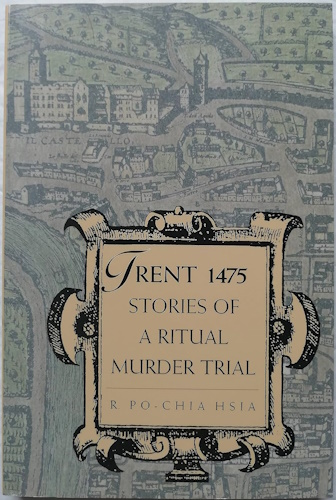

Trent 1475: Stories of a Ritual Murder Trial

On Easter Sunday, 1475, the dead body of a two-year-old boy named Simon was found in the cellar of a Jewish family's house in Trent, Italy. Town magistrates arrested all eighteen Jewish men and one Jewish woman living in Trent on the charge of ritual murder—the killing of a Christian child in order to use his blood in Jewish religious rites. Under judicial torture and imprisonment, the men confessed and were condemned to death; their womenfolk, who had been kept under house arrest with their children, denounced the men under torture and eventually converted to Christianity. A papal hearing in Rome about possible judicial misconduct in Trent made the trial widely known and led to a wave of anti-Jewish propaganda and other accusations of ritual murder against the Jews.
In this engrossing book, R. Po-chia Hsia reconstructs the events of this tragic persecution, drawing principally on the Yeshiva Manuscript, a detailed trial record made by authorities in Trent to justify their execution of the Jews and to bolster the case for the canonization of "Little Martyr Simon." Hsia depicts the Jewish victims (whose testimonies contain fragmentary stories of their tragic lives as well as forced confessions of kidnap, torture, and murder), the prosecuting magistrates, the hostile witnesses, and the few Christian neighbors who tried in vain to help the Jews. Setting the trial and its documents in the historical context of medieval blood libel, Hsia vividly portrays how fact and fiction can be blurred, how judicial torture can be couched in icy orderliness and impersonality, and how religious rites can be interpreted as ceremonies of barbarism.
Paperback: 204 pages
Publisher: Yale University Press; New edition edition (September 25, 1996)


The Butcher's Tale: Murder and Anti-Semitism in a German Town

One of the most dramatic explorations of a German town in the grip of anti-Semitic passion ever written.
In 1900, in a small Prussian town, a young boy was found murdered, his body dismembered, the blood drained from his limbs. The Christians of the town quickly rose up in violent riots to accuse the Jews of ritual murder―the infamous blood-libel charge that has haunted Jews for centuries. In an absorbing narrative, Helmut Walser Smith reconstructs the murder and the ensuing storm of anti-Semitism that engulfed this otherwise peaceful town. Offering an instructive examination of hatred, bigotry, and mass hysteria, The Butcher's Tale is a modern parable that will be a classic for years to come.
Winner of the Fraenkel Award and a Los Angeles Times Best Book of 2002.
4 pages of illustrations
About the Author
Helmut Walser Smith is the Martha Rivers Ingram Chair of History at Vanderbilt University.
Paperback: 272 pages
Publisher: W. W. Norton & Company; First Edition edition (November 17, 2003)


The Kidnapping of Edgardo Mortara

From the Inside Flap
"National Book Award Finalist Bologna, 1858: A police posse, acting on the orders of a Catholic inquisitor, invades the home of a Jewish merchant, Momolo Mortara, wrenches his crying six-year-old son from his arms, and rushes him off in a carriage bound for Rome. His mother is so distraught that she collapses and has to be taken to a neighbor's house, but her weeping can be heard across the city. With this terrifying scene--one that would haunt this family forever--David I. Kertzer begins his fascinating investigation of the dramatic kidnapping, and shows how the deep-rooted antisemitism of the Catholic Church would eventually contribute to the collapse of its temporal power in Italy. As Edgardo's parents desperately search for a way to get their son back, they learn why he--out of all their eight children--was taken. Years earlier, the family's Catholic serving girl, fearful that the infant might die of an illness, had secretly baptized him (or so she claimed). Edgardo recovered, but when the story reached the Bologna Inquisitor, the result was his order for Edgardo to be seized and sent to a special monastery where Jews were converted into good Catholics. His justification in Church teachings: No Christian child could be raised by Jewish parents. The case of Edgardo Mortara became an international cause celebre. Although such kidnappings were not uncommon in Jewish communities across Europe, this time the political climate had changed. As news of the family's plight spread to Britain, where the Rothschilds got involved, to France, where it mobilized Napoleon III, and even to America, public opinion turned against the Vatican. The fate of this one boy came to symbolize the entirerevolutionary campaign of Mazzini and Garibaldi to end the dominance of the Catholic Church and establish a modern, secular Italian state. A riveting story which has been remarkably ignored by modern historians--The Kidnapping of Edgardo Mortara will prompt intense interest and discussion as it lays bare attitudes of the Catholic Church that would have such enormous consequences in the twentieth century.
Paperback: 368 pages
Publisher: Vintage; 1st Vintage Books Ed edition (June 30, 1998)
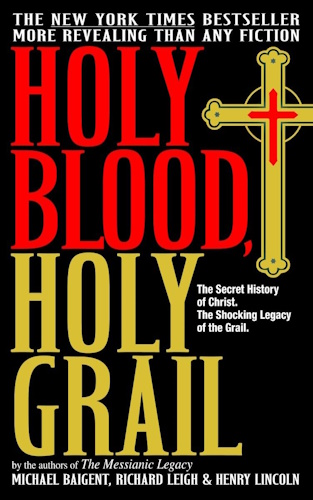

From the Inside Flap
Is the traditional, accepted view of the life of Christ in some way incomplete?
- - Is it possible Christ did not die on the cross?
- - Is it possible Jesus was married, a father, and that his bloodline still exists?
- - Is it possible that parchments found in the South of France a century ago reveal one of the best-kept secrets of Christendom?
- - Is it possible that these parchments contain the very heart of the mystery of the Holy Grail?
According to the authors of this extraordinarily provocative, meticulously researched book, not only are these things possible -- they are probably true! so revolutionary, so original, so convincing, that the most faithful Christians will be moved; here is the book that has sparked worldwide controversey.
"Enough to seriously challenge many traditional Christian beliefs, if not alter them." -- "Los Angeles Times Book Review
"Like "Chariots of the Gods?...the plot has all the elements of an international thriller." -- "Newsweek
About the Author
Michael Baigent was born in New Zealand in 1948 and obtained a degree in psychology from Canterbury University. At one point he gave up a successful career in photojournalism to devote his time to researching the Templars for a film project. Since 1976 he has lived in England.
Richard Leigh is a novelist and short-story writer with postgraduate degrees in comparative literature and a thorough knowledge of history, philosophy, psychology, and esoterica. He has been working for some years as a university lecturer in the United States, Canada, and Britain.
Henry Lincoln is an author and filmmaker and has written for television.
Paperback: 496 pages
Publisher: Dell Trade Paperbacks (January 6, 2004)
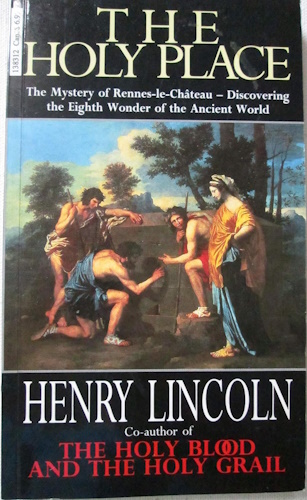

The Holy Place: Mystery of Rennes-le-Chateau

No details.
Paperback: 176 pages
Publisher: Corgi; New Ed edition (1992)
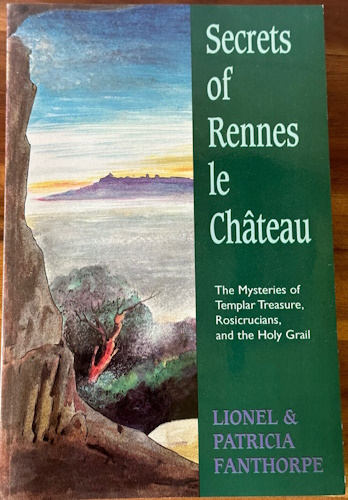

Here are the basic outlines of the mystery of Rennes-le-Château. It was clear that Berenger Sauniere, the parish priest of the small village during the late 19th and early 20th century, had been receiving vast sums of money to refurbish the local church and also to build many structures in the area, such as his Tower of the Magdalene. Sauniere died in 1917, leaving the secret of where he got his fabulous wealth to his housekeeper, Marie Dernaud, who promised to reveal it on her deathbed -- but sadly she had a stroke which left her paralyzed and unable to speak before her death in 1953. Speculation was rife on the source of the parish priest's money. Was it the lost treasure of the Templars or the Cathars in the area? Might it have been buried Visigothic gold? Or was he blackmailing the Church with some terrible secret? The evidence that points to the last possibility is that Sauniere's confession before his death was so shocking that the priest who heard it denied him absolution and last rites.
Paperback: 256 pages
Publisher: Red Wheel/Weiser; 3rd Print edition (May 1, 1992)


Refuge of the Apocalypse: Doorway into other Dimensions

A temple built by Cosmic Intelligence has been uncovered in France.
Hardcover: 348 pages
Publisher: The C.W. Daniel Company Ltd; y First edition edition (January 25, 1986)
![]()
![]()